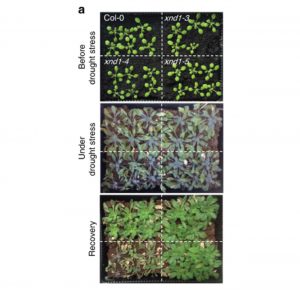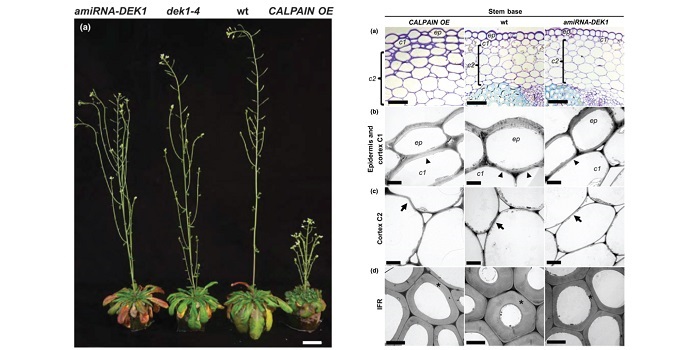
The Arabidopsis negative regulator of root hydraulics XND1 is involved in abiotic and biotic stress responses (Nature Comm.)
Proper uptake and management of water is essential for plant growth and adaptation to stress. However, there are gaps in the understanding of the genetics of root hydraulics, including the regulatory components. Tang et al. used a genome-wide associate analysis approach to identify XYLEM NAC DOMAIN 1 (XND1),…

ABA-mediated regulation of stomatal density is OST1-independent (Plant Direct)
Stomata are not only important for CO2 uptake, but are also important in limiting water loss when the water availability is running low. Stress hormone ABA activates protein kinase OPEN STOMATA 1 (OST1) leading to opening of ion channels, water efflux and stomatal closure. Increased levels of ABA decrease…

Members of the Arabidopsis FORKED1-LIKE gene family act to localize PIN1 in developing veins (J Exp Bot.)
Vascular system is one of the adaptive features for terrestrial plants. Polar localization of PIN1 is essential for creating directional auxin flow, resulting in vein pattern formation. Mariyamma et al. propose that FORKED1 (FKD1) and its homologues control the PIN1 polar localization. The team identified…

Arabidopsis DEFECTIVE KERNEL1 regulates cell wall composition and axial growth in the inflorescence stem
Plants can reach impressive heights, thanks to the mechanical stability provided by the cell walls. The required strength is ensured by coordination of cell wall deposition and cell expansion. Plant-specific calpain (DEK1) regulates axial stem growth, as lines overexpressing the calpain domain develop…

